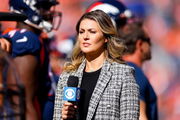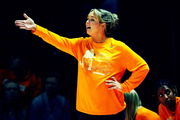

When Caitlin Clark turned down a $1 million contract from Unrivaled last year, jaws dropped collectively. Choosing rest over riches, Clark made it clear that pacing yourself is half the game in the long marathon of professional basketball. However, when one thinks further, there’s an ahhh! moment, as Clark doesn’t even need that cash, as unfair as her WNBA salary might be. Her sponsorships and brand deals do enough for her. But here’s the thing—not everyone in the WNBA has that option or privilege. For most, the idea of an offseason is an unmissable one. Basketball for them? It’s a 365-day commitment with little pause for breath.
Watch What’s Trending Now!
Once the WNBA season comes to a close, players don’t get boarding passes for vacations. They fly out to suit up for international leagues like the EuroLeague, China’s WCBA, or Australia’s WNBL, which all tip off around October or November. Some might say that these leagues are a way to keep the muscle memory intact, but they’re more like financial lifelines that make one barely care about injuries. Considering that in the WNBA, players have a shot at getting popular, but never a chance to get enough dollars.
Take Kelsey Mitchell, for instance, Clark’s “backcourt homie,” who’s been hustling abroad for around five years. Thanks to that, Mitchell, the guard who CC feels “fortunate” to play with, made headlines not for a buzzer-beater, but for a busted finger. While she pulled out of the remaining WCBA season citing personal reasons, one can only imagine the toll the injury must have taken on her. For the entire time since she’s been stateside, her focus has been on how to shoot with that fractured finger, which is just not an easy task.
ADVERTISEMENT
Caitlin Clark’s new nickname for Kelsey Mitchell 👀
“Backcourt Homie” pic.twitter.com/Rdj4bFqK7w
— Kit Espina (@KeithEspino22) September 2, 2024
“I didn’t do any rehab. No one helped me out in China, no one fixed it,” said Mitchell as she held up her crooked middle finger. Now, just think that she cannot even consider going through a surgery, as the healing period can range anywhere from two to six weeks. These kinds of setbacks don’t just end careers early—they bench players before the WNBA season even begins.
That is why National Analyst Rachel DeMita got candid on Courtside Club, expressing her concern for the players. “It made me so sad listening to this interview because like she said here, no one helped her in China. The training staff did not do what they needed to do to help her finger to heal properly. And that’s probably the reason that it’s kind of stuck like this, like it is now,” DeMita said.
ADVERTISEMENT
This isn’t just a one-off; it’s only the latest chapter in a long saga of players forced to play double-duty just to stay afloat. DeMita hence pointed out what many fans already fear: this grind isn’t sustainable. “They should be able to be using that time to take care of their body, train, do pickup games and whatnot but not have to go to another country like Kelsey did go to China and play there because you’re not making wages that are sustainable enough in the WNBA.”
Like many in the basketball community, DeMita pinned her hopes on the CBA. With a revamped collective bargaining agreement on the horizon, there’s hope for more than just a softened salary cap. “Hopefully with the new CBA, a lot of these players who are playing in offseason leagues won’t have to do that and they can really focus on just taking care of themselves, getting rest, training, lifting, doing all those little things and getting ready for the WNBA season,” she added.
ADVERTISEMENT
But no one knows anything yet. There haven’t been any greatly positive updates. Owing to that, Angel Reese had warned the league of a possible lockout. “I got to get in the meetings, because I’m hearing like, if y’all don’t give us what we want, we sitting out,” she’d said in her podcast, and while many mocked her for this, let’s not pretend like such a warning wasn’t needed.
Last year, the WNBPA opted out of the 2020 collective bargaining agreement and is expected to negotiate an agreement before 31st October. “This isn’t some sudden wake-up call. It’s the culmination of what we’ve been driving for over the last several seasons,” WNBPA vice president Kelsey Plum of the Las Vegas Aces said. “We’ve played a key role in the league’s historic growth and now we’re breaking free from the current system to demand full transparency and an equitable stake in the business we’ve helped build.”
And with the WNBA’s shiny new 11-year media rights deal, worth an eye-popping $200 million annually starting in 2026, players are absolutely right in demanding their worth. With stakes this high and player patience running low, the league might want to take a cold, hard look at itself. If not, the warnings won’t remain mere words, and the league risks losing the very assets that run the entire system.
ADVERTISEMENT
At the forefront of this fight are two league pioneers who are making sure they keep voicing their opinions.
CBA is not the only solution
Unrivaled, as we all know by now, stepped in like a savior recently. It would be fair to say that the 3-on-3 women’s basketball league, founded by WNBA stars Napheesa Collier and Breanna Stewart, shook up the system and put much needed pressure on the W. In its inaugural season, it offered the highest average salary in all of U.S. women’s pro sports, making it rain six figures with ease and pretty much staring the WNBA’s max salary dead in the eyes.
ADVERTISEMENT
Yet, Breanna Stewart is not stopping there. She might have created an alternative, but she is making sure the world knows that the solution is far from being achieved and the onus lies on Cathy Engelbert and Co.
Recently, Indiana Fever averaged 1.3 million viewers in their game against the Brazilian National Team in Iowa on May 4. Notably, that number beat out 55 of 57 NBA preseason games on ESPN since 2010. Paige Bueckers’ arrival is another boon for the league, as she is achieving great preseason numbers of her own.
Top Stories
NFL Make Final Punishment Decision on Controversial Patrick Mahomes Incident

Tom Brady Hints at Nefarious Actions From Bears After Packers Lose Sideline Heaters

Johnson Wagner Admits Guilt for Making Jordan Spieth Miss Out on Rare PGA Tour Record

Horrific Aerial Footage of Greg Biffle’s Fatal Crash Emerges Leaving NASCAR Community in Tears

Amanda Balionis Receives Wake-Up Call That She Didn’t Expect to Face at 39

Physical Clash Sparks Tension on Court as Kim Caldwell’s Lady Vols Lose to No. 16 Louisville

In light of this, Breanna Stewart pointed out how there is no better measure of growth than such great success of preseason games. “It’s a metric for us to see where we’re at,” the two-time MVP said. “Having preseason games on ESPN or… I saw the Valkyries had 17k for their preseason game. Those things are unheard of, and it’s just showing how people want to support.”
ADVERTISEMENT
So, as the momentum builds, Commissioner Cathy Engelbert must tread carefully. The WNBA’s bright but delicate future lies in her hands.
ADVERTISEMENT
ADVERTISEMENT
ADVERTISEMENT

